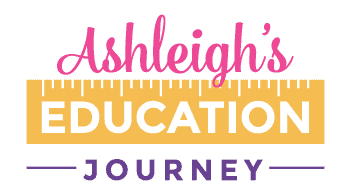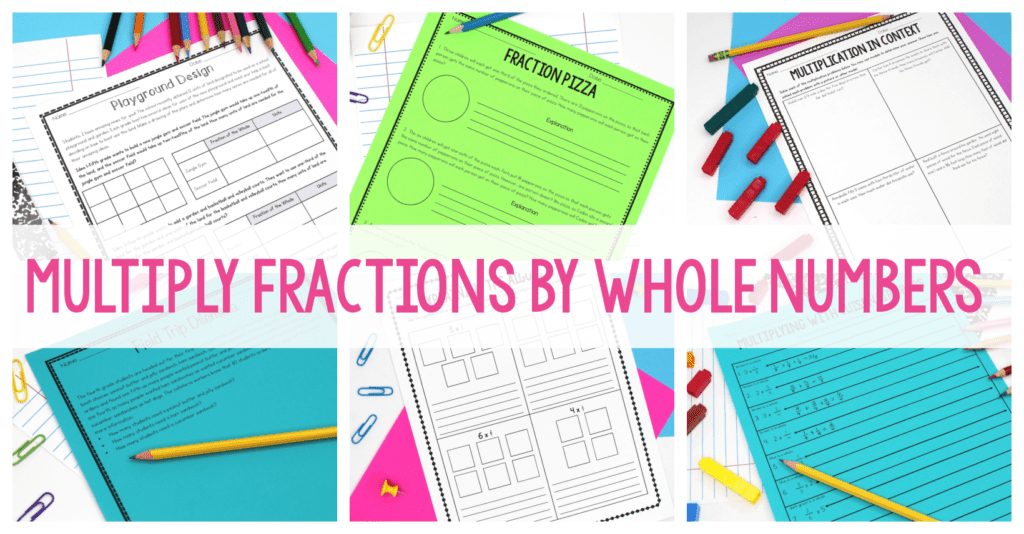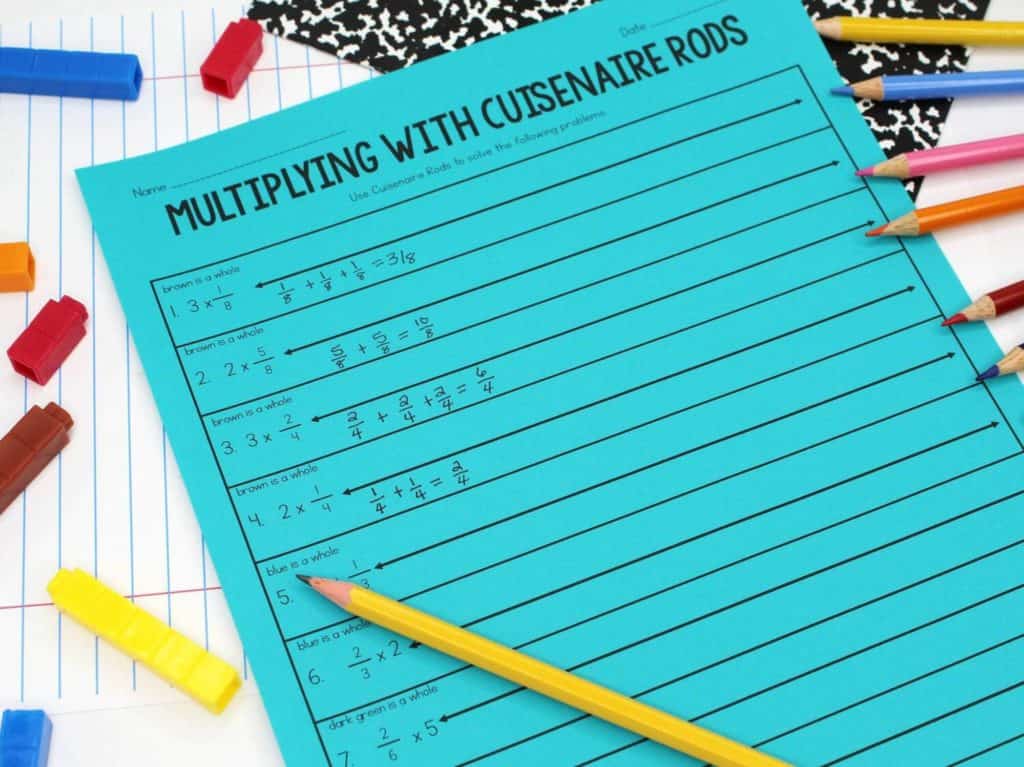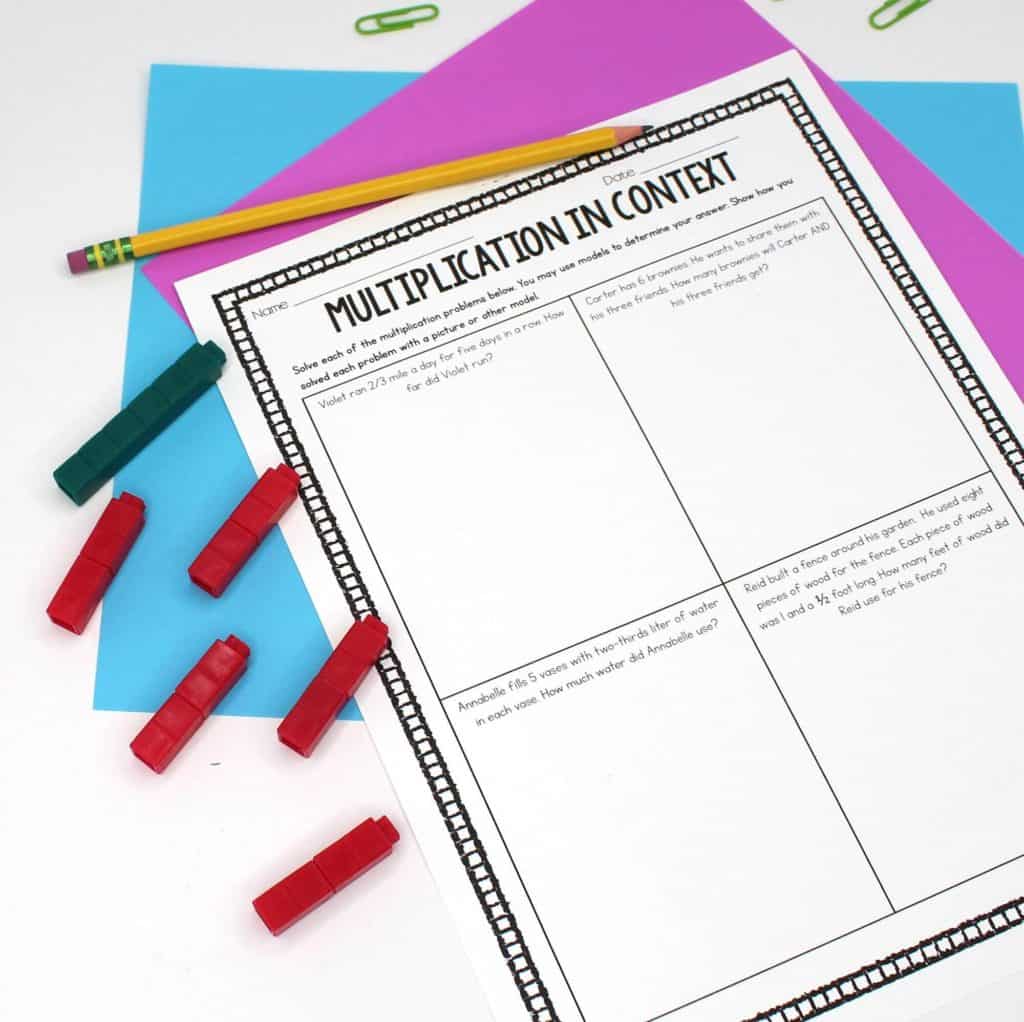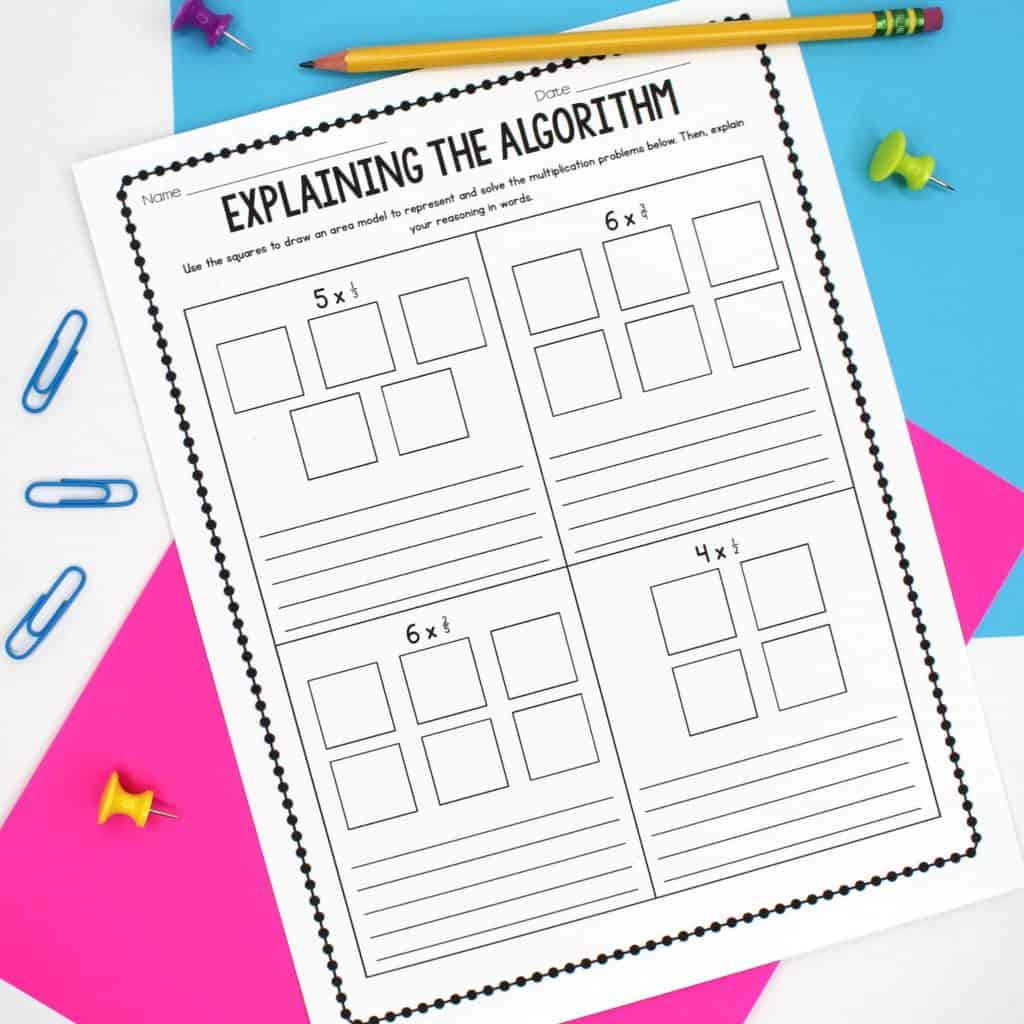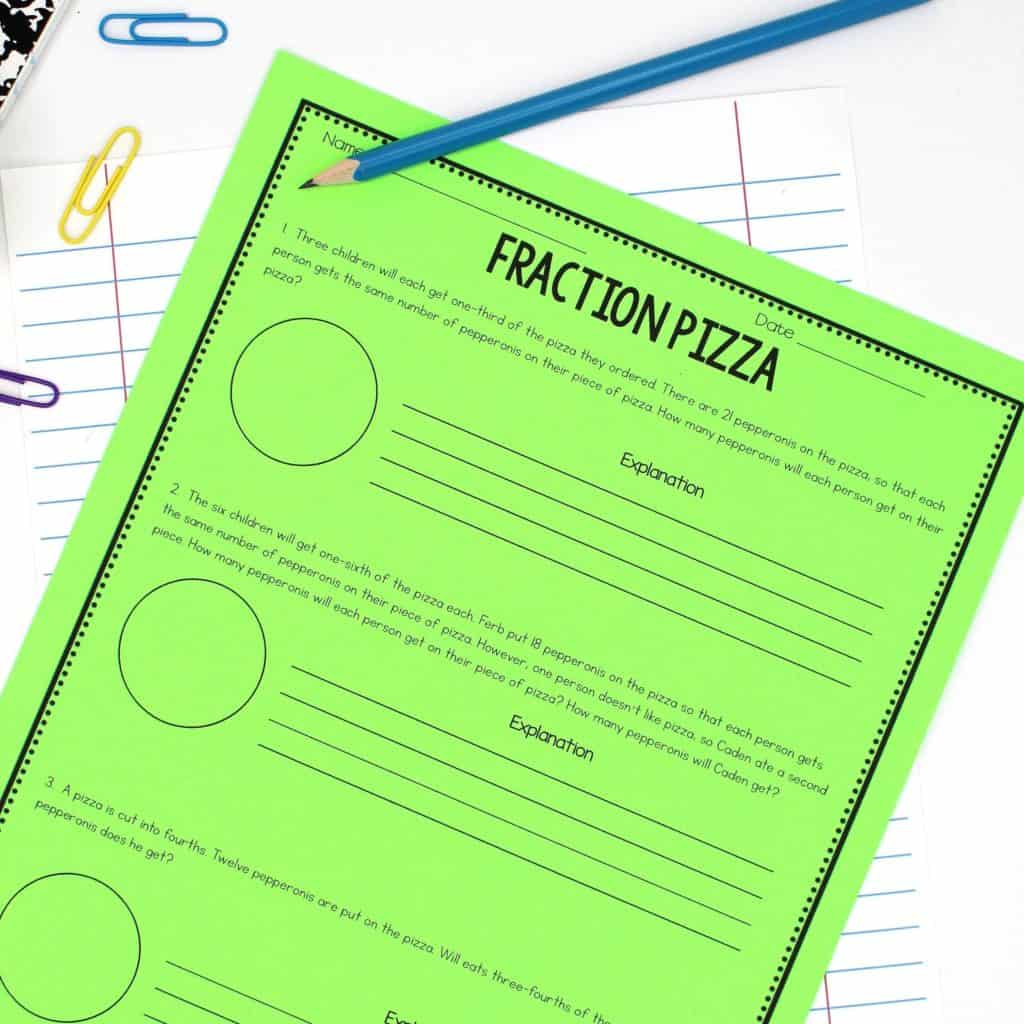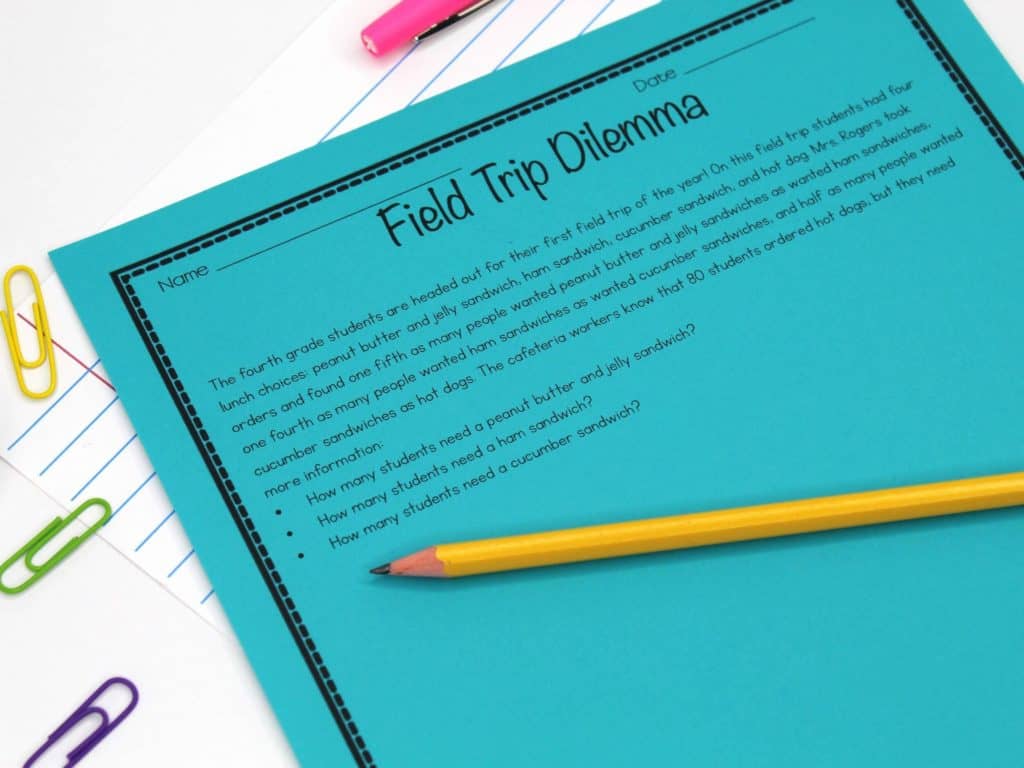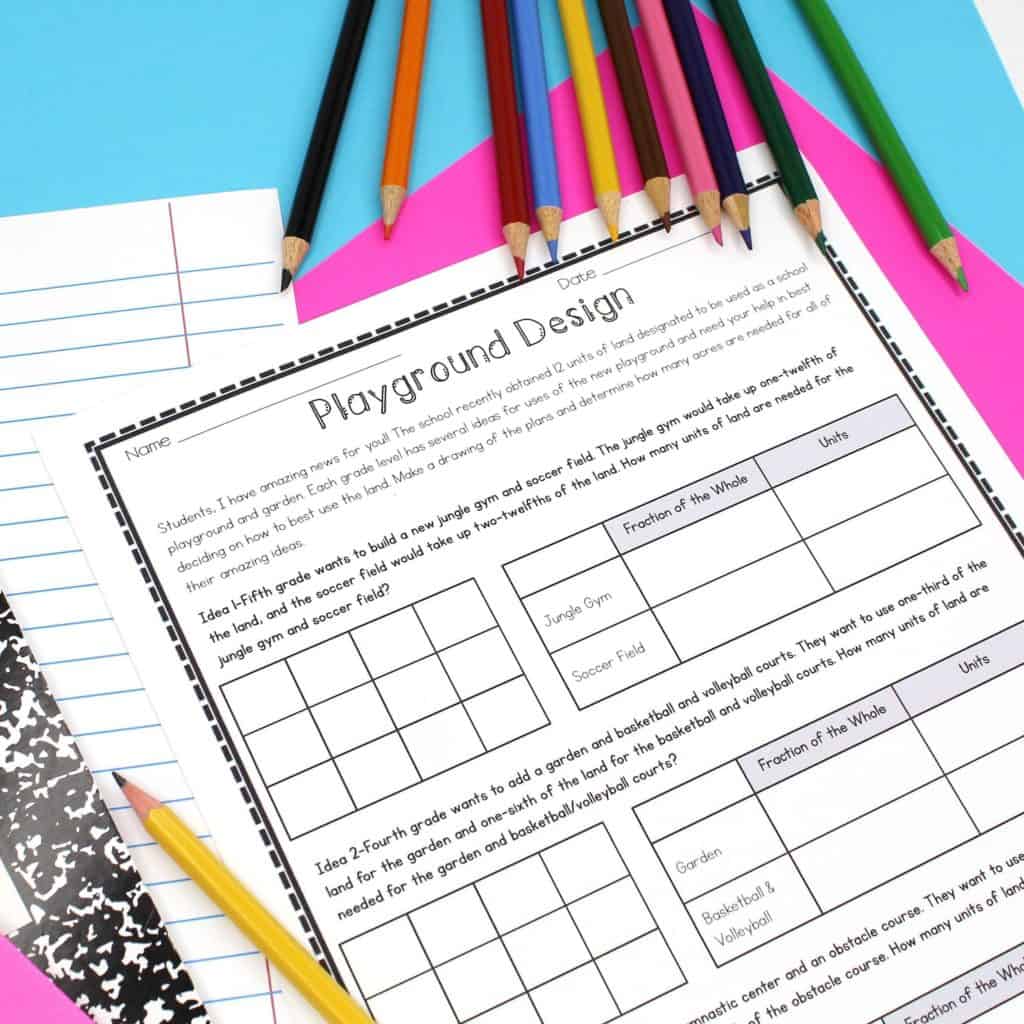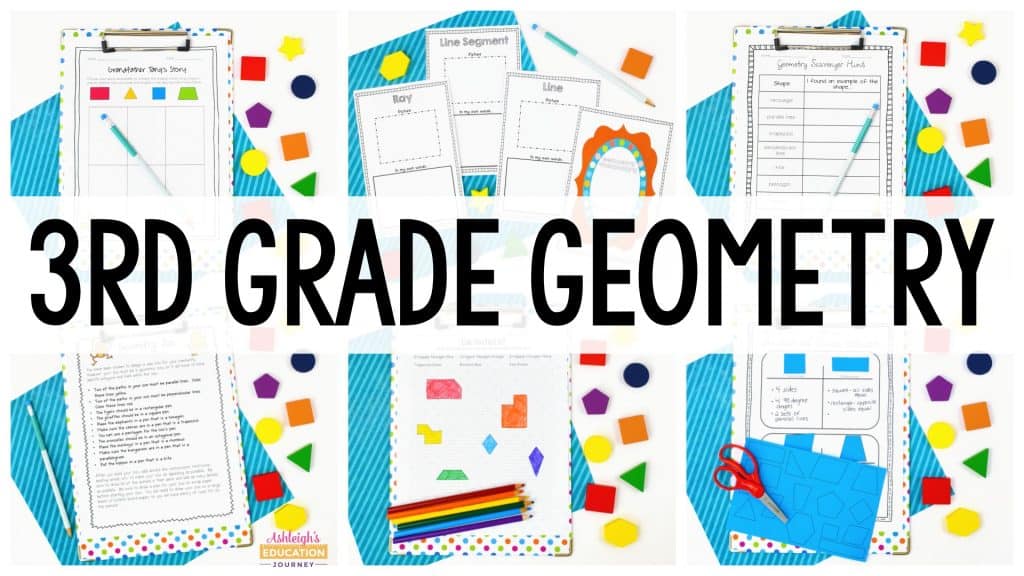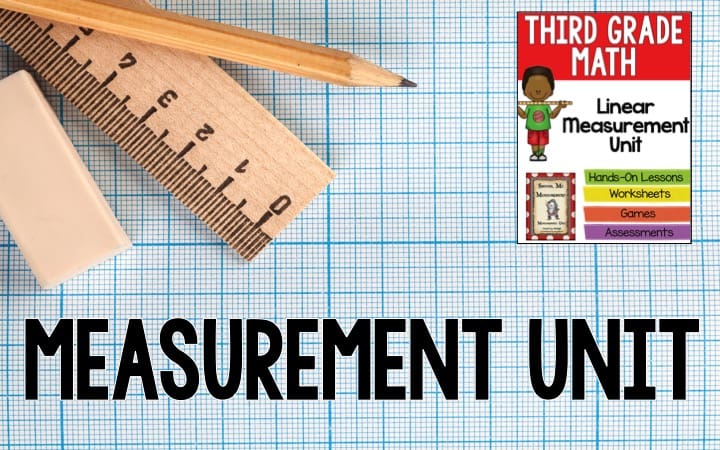Teaching students to multiply fractions by a whole number doesn’t have to be terrible! When you throw the terms “multiply” and “fractions” in the same standard, it can sound a bit daunting. Fortunately, if students have a sound understanding of multiplication and fractions, this is somewhat natural for students. This post includes some of my favorite lessons for teaching students to multiply fractions by whole numbers.
Start With the Concept
As with most of the fraction concepts, I start with teaching the concept through Cuisenaire Rods. If the brown rod is a whole, students would first have to determine which color rod is an eighth. Then, students would use repeated addition to find the sum of three groups of one-eighth.
This progresses past unit fractions, as well as reverses the order of the factors in the number sentence. It’s far too easy for students to think there is only one way to present content or to solve problems.
Multiply Fractions By a Whole Number in Context
Just like other math concepts, it’s important to incorporate word problems to give context to the concept. After introducing the concept of multiplying fractions by whole numbers, I have students solve multiplication word problems. If needed, students can use manipulatives. However at this point, it’s good to have students transition to pictorial representations.
Multiplication Algorithm
One of the misconceptions that students may have is that the operation of multiplication always produces a larger product. While this is true with whole numbers, this is not true for multiplication with fractions. In this task, students use area models to begin understanding the algorithm for multiplying fractions. Students will also begin to see that the product does not always increase when multiplying a whole number by a fraction.
In the activity, students solve four multiplication of fraction problems that require students to model their work through an area model. After students show how the problem can be represented through an area model, they should give a written explanation.
Multiply Fractions by a Whole Number – Problem Solving
The remainder of my lessons that focus on multiplying a fraction by a whole number are problem solving lessons where students apply what they’ve already learned in problem solving situations.
I do try to avoid rushing through the concrete and pictorial stages of learning. It’s easy to jump ahead to completely abstract assignments, but students need time to work with multiple representations to solidify their understanding.
Throughout these lessons, review various problem solving strategies such as making a table or working backwards, as students will more than likely use these strategies in the problem solving tasks. Even though it may be initially difficult for students to get started in these tasks, the problem solving will encourage critical thinking skills and the application and conceptual understanding of fractions.
My favorite lesson is the Playground Design. In this task, students use the multiplication of fractions to design a new playground for their school. The task is divided into three options for the new playground. In each part, students shade in the fractional parts of the 12 playground units and write the fraction of the whole and the total units. After students have completed each section, they may use the second page to design the playground using the correct fractional parts. Encourage students to be creative and to complete high quality work.
You can find all of the multiplying fractions by a whole number lessons in this post here.
Word Problems
We can’t forget about word problems! When teaching students to multiply fractions by whole numbers, students should understand that there are two different multiplication situations. One situation is when a whole number is multiplied by a fraction. For example, Lacy buys four bags of cherries that each weigh 1/3 pound. How many pounds of cherries does Lacy buy? The second situation is when a fraction is multiplied by a whole number. For example, a timer chimes every 1/2 hour during the school day. If the school day is 8 hours long, how many times does the timer chime each school day? I created a sort that allows students to review addition and subtraction word problems, as well as discern between the two multiplication situations. You can download the sort free here.
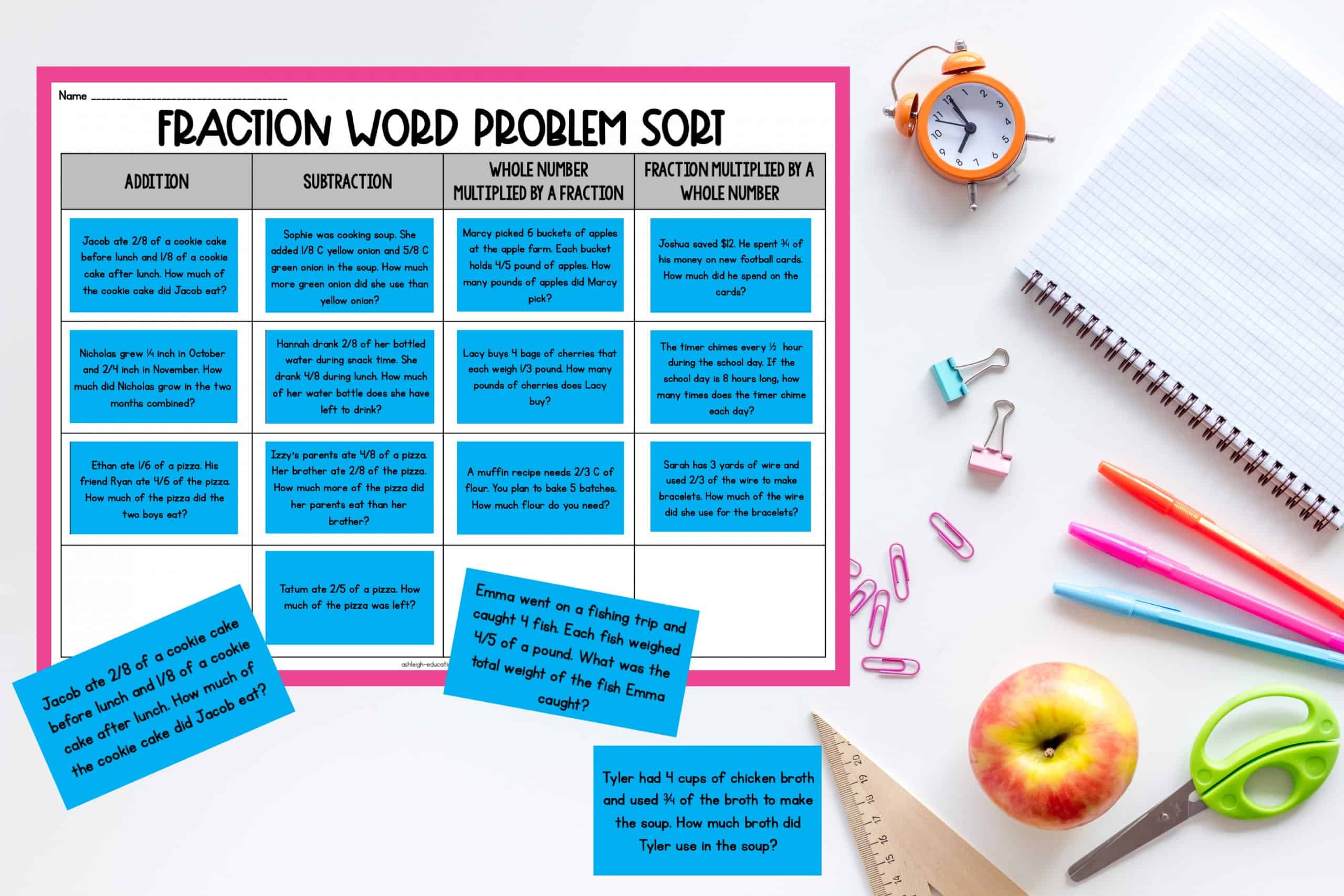
If you’re looking for more fraction resources and ideas don’t miss this post. It’s PACKED with ideas and content!
